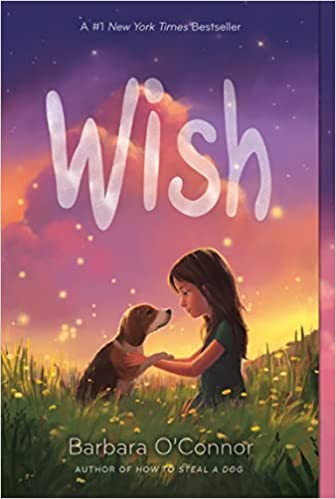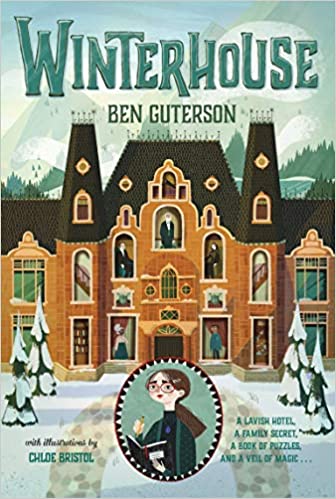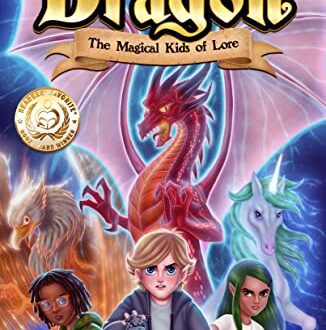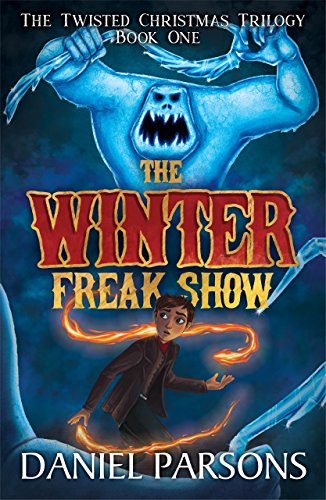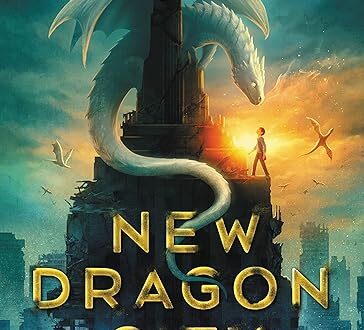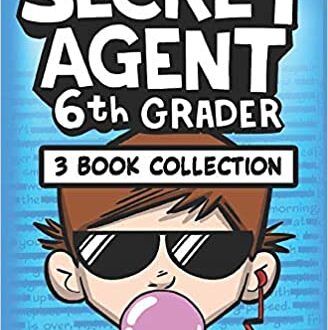-
Ziplines — Unraveling the Secrets of Motion
Hey there, young scientists, and curious minds! Are you ready to dive into the fascinating world of zippiness and uncover the secrets behind the exhilarating motion of objects? We’ll embark on an exciting journey into the realm of physics, where we’ll unravel the principles that make things zoom, zoom, zoom! Zippiness isn’t just about speed; it’s about understanding the forces, energy, and interactions that shape the way objects move. Fasten your seatbelts and join us to explore the science of zippiness. Get ready to zoom into the world of physics and discover the fascinating science behind zippiness for explorers like you!
Ziplines are pulleys suspended on a cable that allow people to glide from one point to another. They are often used for recreational or educational purposes and can be found in various locations around the world. Some of the best zipline and aerial adventure parks in the United States are Jungle Zipline Maui in Hawaii, Brainerd Zip Line Tour in Minnesota, and Green Pleasure Pier in California. Some of the most thrilling ziplines in Europe are Zip World Velocity 2in Wales, Flying Fox XXL in Austria, and Volo dell’ Angelo in Italy.
What is the science of motion called? The branch of physics describing the motion of objects without reference to its cause is kinematics; the branch studying forces and their effect on motion is dynamics. In the world of mechanics, there are four basic types of motion. These four are rotary, oscillating, linear and reciprocating. The examples of motion include running, cycling, jumping, swimming, eating, drinking, playing, writing, typing, moving cars, and throwing a ball.
You can describe the motion of an object by its position, speed, direction, and acceleration. An object is moving if its position relative to a fixed point is changing.
Motion is caused by forces. Once an object is moving, it carries on at the same speed and in the same direction unless a force makes it speed up, change direction, or slow down and stop.
There are many examples of motion. Here are some common ones:
- Pulling a drawer, throwing a ball are all examples of linear motion.
- Earth’s revolution around the sun, electrons’ motion around the nucleus are examples of circular motion.
- Spinning wheel, rotating fan, motion of the steering wheel of a car, motion of the earth on its own axis are examples of rotatory motion.
- Sliding is an example of rectilinear motion.
- Bowling is an example of rotational motion.
A zipline is a pulley suspended on a cable, usually made of stainless steel, mounted on a slope. It enables cargo, or a person propelled by gravity, to travel from the top to the bottom of the inclined cable by holding on to, or being attached to, the freely moving pulley. Its use is not confined to adventure sport, recreation, or tourism, although modern-day usage tends to favor those meanings.
Ropeways have been used for transport for over 2,000 years. A type of pulley with a grooved wheel known as a sheave is used in ziplines, and the pulley turns as it travels along, thus reducing friction and enabling greater speed than would otherwise be possible.
Ziplines may be designed for children’s play and found on some adventure playgrounds. Inclines are fairly shallow and so the speeds kept relatively low, negating the need for a means of stopping. The pulleys are connected to the cable on playground equipment, and the user will usually hold on to a handgrip below. Occasionally, a seat or safety strap is included. Users usually return the grip or seat to the top of the hill by pushing or pulling it via a short wire on foot.
Zipline tours are now popular vacation activities, where they may be an element on a larger challenge such as a hike or ropes course.
Now that you know about ziplines, are you interested in trying them out?
AIME
-
Wish
Eleven-year-old Charlie Reese has been making the same secret wish every day since fourth grade. She even has a list of all the ways there are to make the wish, such as cutting off the pointed end of a slice of pie and wishing on it as she takes the last bite. But when she is sent to the Blue Ridge Mountains of North Carolina to live with family she barely knows, it seems unlikely that her wish will ever come true. That is, until she meets Wishbone, a skinny stray dog who captures her heart, and Howard, a neighbor boy who proves surprising in lots of ways. Suddenly Charlie is in serious danger of discovering that what she thought she wanted may not be what she needs at all.
From award-winning author Barbara O’Connor comes a middle-grade novel about a girl who, with the help of a true-blue friend, a big-hearted aunt and uncle, and the dog of her dreams, unexpectedly learns the true meaning of family in the least likely of places.
From author Barbara O’Connor for Readers 8-11.
-
The Magic and Fun of Bubbles
Hello, young bubble fans and fun seekers of magical moments! Are you ready to embark on a whimsical adventure that will leave you surrounded by shimmering spheres of wonder? Today, we’ll dive into the enchanting world of bubbles, where ordinary soap and water transform into captivating orbs that dance in the air. Bubbles aren’t just fleeting and delicate; they hold within them a world of scientific wonders, playful possibilities, and endless entertainment. So, roll up your sleeves, grab your bubble wands, and join us as we explore the secrets, tricks, and pure joy that come with playing and experimenting with bubbles. Get ready for a bubble bonanza that will have you giggling, experimenting, and embracing the sheer delight of bubble magic!
Bubbles are beautiful, fun, and fascinating, but do you know what they are and how they work? Take a look at the science behind bubbles.
To begin with, what is a bubble?
A bubble is a thin film of soapy water. Most of the bubbles that you see are filled with air, but you can make a bubble using other gasses, such as carbon dioxide.
The film that makes the bubble has three layers. A thin layer of water is sandwiched between two layers of soap molecules. Each soap molecule is oriented so that its polar (hydrophilic) head faces the water, while its hydrophobic hydrocarbon tail extends away from the water layer.
No matter what shape a bubble has initially, it will try to become a sphere. The sphere is the shape that minimizes the surface area of the structure, which makes it the shape that requires the least energy to achieve.
What happens when bubbles meet?
When bubbles stack, do they remain spheres? The answer is—No. When two bubbles meet, they will merge walls to minimize their surface area.
If bubbles that are the same size meet, then the wall that separates them will be flat. If bubbles that are different sizes meet, then the smaller bubble will bulge into the large bubble. Bubbles meet to form walls at an angle of 120 degrees. If enough bubbles meet, the cells will form hexagons.
Ingredients in Bubble Solutions
Though soap bubbles are traditionally made from (you guessed it) soap, most bubble solutions consist of detergent in water. Glycerin (C3H5(OH)3) is often added as an ingredient. Detergents form bubbles in much the same way as soap, but detergents will form bubbles even in tap water, which contains ions that could prevent soap bubble formation. Glycerin extends the life of a bubble by forming weaker hydrogen bonds with water, slowing down its evaporation.
How to make bubbles that don’t pop.
- 3 cups of water
- 1 cup liquid dishwashing detergent (Joy is a good choice
- 1/2 cup white corn syrup
Simply stir the ingredients together to make the bubble solution. You can use dark corn syrup just as easily as white corn syrup, but the solution will be colored. Also, you can add food coloring or glow paint to color the bubbles. You can also substitute another type of sticky syrup, just expect changes in color and odor.
Here’s another easy unpoppable bubble recipe:
- 3 cups water
- 1 cup dishwashing liquid
- 1/2 cup glycerin
Try making a batch and having fun with your friends chasing the bubbles as they dance on the air currents!
AIME
-
Winterhouse
Orphan Elizabeth Somers’s malevolent aunt and uncle ship her off to the ominous Winterhouse Hotel, owned by the peculiar Norbridge Falls. Upon arrival, Elizabeth quickly discovers that Winterhouse has many charms―most notably its massive library. It’s not long before she locates a magical book of puzzles that will unlock a mystery involving Norbridge and his sinister family. But the deeper she delves into the hotel’s secrets, the more Elizabeth realizes she is somehow connected to Winterhouse. As fate would have it, Elizabeth is the only person who can break the hotel’s curse and solve the mystery. But will it be at the cost of losing the people she has come to care for, and even Winterhouse itself?
From author Ben Guterson and illustrator Chloe Bristol for Readers 9-12.
-
Math Magic: Math Tricks for Kid Wizards!
Hello, young mathematicians and problem-solving enthusiasts! Get ready to unlock the secrets of math and discover the joy of numbers in a whole new way. Here we’ll delve into the fascinating world of math tricks that will leave you dazzled and amazed. Who said math had to be boring? We’ll prove them wrong as we unveil mind-boggling tricks, and clever shortcuts, that will make you feel like a true math wizard. So, dust off your calculators, sharpen your pencils, and join us on this thrilling journey of math magic as we explore fun tricks that will not only sharpen your skills. But will also make you fall in love with the enchanting world of numbers. Prepare to be amazed as we unleash the fun and excitement of math tricks for kid wizards like you!
Let’s start with the classic “Pick a number, any number!” trick. Ask a friend to follow these steps:
- Pick any number (We’ll use 73).
- Add 3 (73 + 3 = 76).
- Double the result (76 x 2 = 152).
- Subtract four (152 – 4 = 148).
- Divide that number in half (74).
- Subtract your original number (74 – 73 = 1).
- The answer is always 1.
Here are two math tricks where the answer is always the same—no matter what number the person chooses.
In this first trick, the answer is always 2.
- Think of a whole number from 1 through 10 (We’ll use 6).
- Double it (6 x 2 = 12).
- Add 4 (12 + 4 = 16).
- Divide by 2 (16 ÷ 2 = 8).
- Subtract the original number (8 – 6 = 2).
- The answer is always 2.
In the second trick, the answer is always 18.
- Choose any number (We’ll use 31).
- Multiply the number by 100 (31 x 100 = 3,100).
- Subtract the original number from the answer (3,100 – 31 = 3,069).
- Add those individual numerals together (3 + 0 + 6 + 9 = 18).
- The answer is always 18.
This trick is a great way to learn addition and division skills. In this math trick, you will make a prediction on a piece of paper as “37” and set it aside without showing your prediction.
- Then ask your friend to think of a 3-digit number where all 3 digits are the same, like 222, 666, etc.
- Next, ask your friend to add all the three digits together.
- Then divide the 3-digit number your friend thought of by the sum of the number.
- You can then hand over your prediction and your friend will be astonished at how you guessed the answer, which will always be 37.
Your friends will really like you for teaching them this interesting math trick. With this easy mathematics trick, you can calculate the sum of two-digit numbers quick.
For example: If you have to find the sum of 56 and 62.
- You will break the numbers into ten’s and one’s place mentally (56 becomes 50 & 6) and (62 becomes 60 & 2).
- Now, you will add the tens place first (50 + 60) = 110.
- Then, you will add the one’s place (6 +2) =8.
- Now you just need to add the two answers to get the total (110 + 8) =118.
AIME
-
The Winter Freak Show
Kids are vanishing in Victorian London. Only Toby knows why. Can he save the city before falling victim himself?
After twelve-year-old Toby Carter escapes a brutal workhouse at Christmas, he can’t believe his good fortune. Adopted by a band of travelling performers called The Winter Freak Show who put on spellbinding shows each night, he finally believes he’s found the family he always wanted. Then everything falls apart.
Children are disappearing throughout the city. Pretty soon, all evidence points to those Toby trusted the most and he finds himself caught up in a conspiracy far more sinister than he ever imagined. Defenseless and on the run, he’s confronted with two options: uncover the kidnapper before another child falls victim, or stand by and watch as the shadowy criminal becomes unstoppable.
The fate of Christmas rests in the balance.
From author Daniel Parson for Readers 10-15.
-
Haiku—Writing Fun Poems
Haiku poetry is a type of short form poetry that originated in Japan.
It usually comprises three lines with a total of 17 syllables in a 5-7-5 pattern. It also often includes a kireji, or a cutting word that creates a pause or contrast, and a kigo, or a seasonal reference that sets the mood. Haiku poems are known for their simplicity and elegance, capturing a moment of beauty or emotion in nature or everyday life. Some famous haiku poets are Matsuo Bashō, Yosa Buson, and Kobayashi Issa.
To write a haiku, you can follow these steps:
- Choose a topic that inspires you or makes you curious. It can be anything from a flower to a feeling.
- Think of a word or phrase that describes the season or time of year related to your topic. This will be your kigo.
- Think of a word or phrase that contrasts or complements your kigo. This will be your kireji.
- Arrange your kigo and kireji into three lines of 5, 7, and 5 syllables each. You can use punctuation or capitalization to emphasize your kireji or create a pause.
- Read your haiku aloud and see if it flows well and conveys the image or emotion you want.
Matsuo Bashō was a 17th-century Japanese poet who is considered one of the greatest masters of haiku. He wrote about 1000 haiku poems in his lifetime, many of them inspired by his travels around Japan. Here is an example of his haiku poems:
Autumn rain falling
The pond is still and silent
A frog leaps in splash
Yosa Buson was an 18th-century Japanese poet and painter who was one of the four great masters of haiku. He admired Matsuo Bashō and followed his style of using natural imagery and simple language to express deep emotions and insights. He also added his own sensibility and painterly skill to his haiku, creating vivid and colorful scenes.
Here is an example of his haiku poems:
A chestnut falls
From the eaves of the shrine
The sound of water
Kobayashi Issa was a haiku poet in the Edo period who used dialect and spoken words for haiku. He was born into a farmer family and experienced many hardships and losses in his life. His poems are known for their simplicity, humor, and compassion for all living things. Here is an example of his haiku poems:
Everything I touch
With tenderness, alas,
Pricks like a bramble
Writing a haiku poem can be fun. Take, for instance, this poem about crocodiles in space written like you are a pirate:
Ahoy, me hearties!
Space crocs are on the prowl
Shiver me timbers!
Or try writing one about your dog. Like this one:
You are my best friend
Loyal, playful, and cuddly
I love you so much
What about one about homework, like this one:
Homework never ends
Stacks of papers and books
When will I be free?
Give writing haiku poems a try. You’ll have fun and impress your friends!
AIME
-
Middle School: Winter Blunderland
Sometimes middle school feels like a dangerous mission in the cold, unforgiving tundra. Sometimes it literally is. Will Rafe survive his most (frost)biting adventure yet?
Things heat up at Hills Village Middle School when Rafe gets an invitation from Dr. Daria Deerwin to join a research study on polar bears. How many times in life do you get a chance to come face‑to‑face with a real polar bear in the wild? Rafe is ready to find out!
Alaska is pinkie‑freezing, hair‑freezing, snot‑freezing cold, but Rafe might be headed for a meltdown. He’s spending every waking moment with Penelope, who he definitely has a crush on, and a polar bear Dr. Deerwin is tracking goes missing…with poachers on the tundra. It’s up to Rafe, Penelope, and their new friends to save the day in Rafe’s coolest adventure yet.
From authors James Patterson and Brian Sitts and illustrator Jomike Tejido for Readers 8-12.
